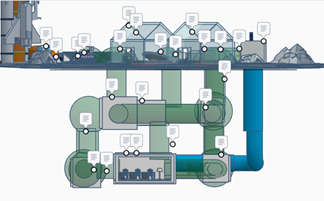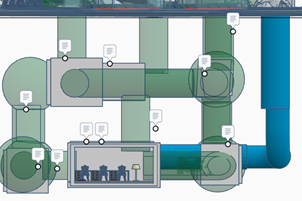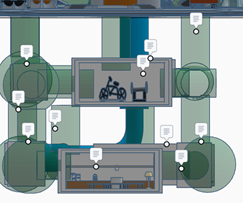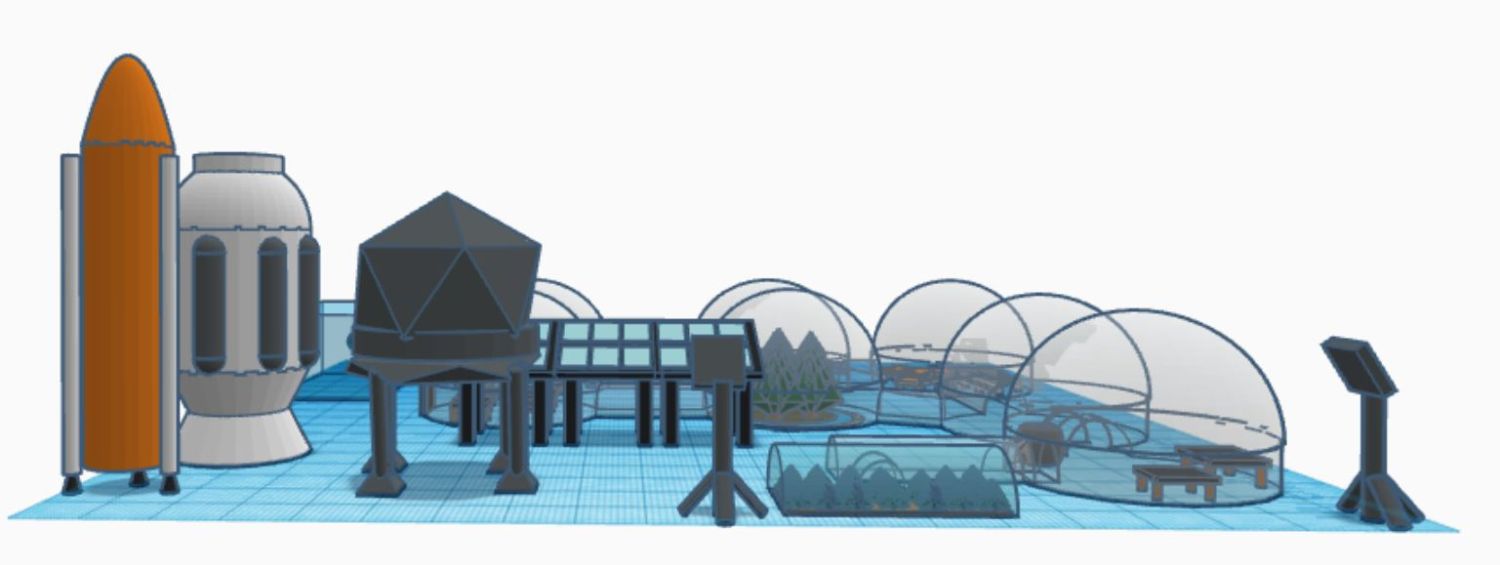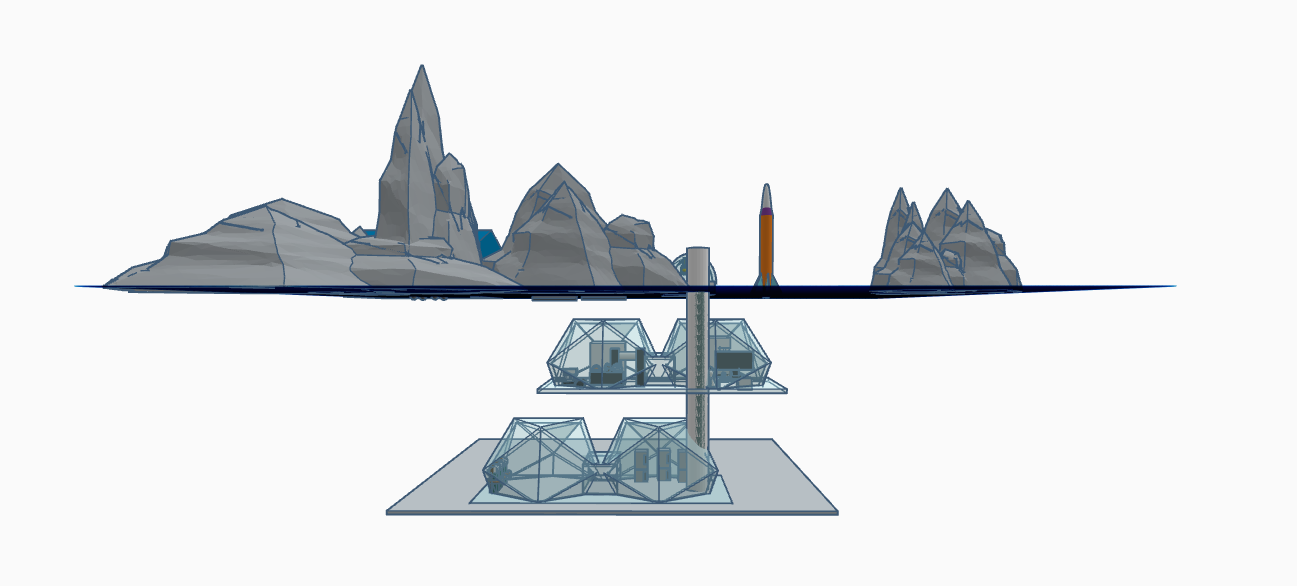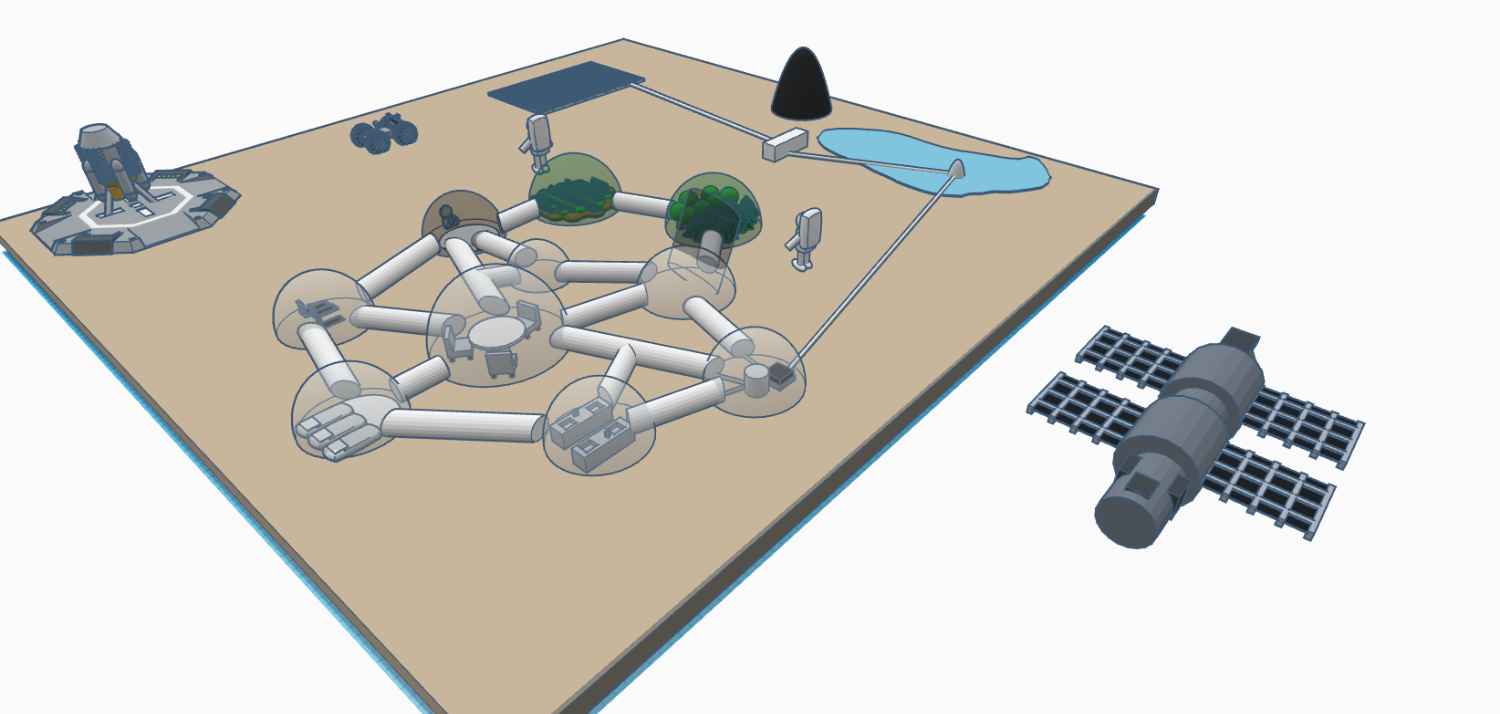Moon Camp Explorers Gallery 2021-2022
In Moon Camp Explorers each team’s mission is to 3D design a complete Moon Camp using Tinkercad. They also have to explain how they will use local resources, protect astronauts from the dangerous of space and describe the living and working facilities.
Team: MOONBOW
Kusadasi Makbule Hasan Ucar Anatolian High School Aydin Turkey 14 5 / 5
External link for 3d
|
Project description
Our base’s name is Moonbow-07. It’s named after moonbow (also known as a moon rainbow or lunar rainbow) is a rainbow produced by moonlight rather than direct sunlight. Our camp designed for five astronauts. They’ll do researches and work there.Each crew will stay there for 12 months. We wanted it to be safe, that’s why our rooms are underground. Our base has bedrooms for astronauts, workroom, kitchen , common room , bathroom, greenhouse , laboratory,water filteration building , solar panels,rovers and space vehicle. Most of the parts of the camp is regolith, we used materials from Earth as well. We also used regolith in greenhouse. Our crew will examine the plants development in lunar gravity and regolith. The greenhouse will provide the oxygen need. |
||||
|
Where do you want to build your Moon Camp?
Close to the lunar poles Why did you choose this location?
Near to the Lunar Poles. Because the temperature is more suitable for living and the sunlight duration is important for our base because we will use solar panels for electricity. How do you plan to build your Mooncamp? Which materials will you use?
Living and working areas are underground and we used regolith for them. There are corridors, waterpipes and vent ducts as well. For the entrance and laboratory- near the entrance-, we used transparent shockproof glasses. Because this material makes obsevation and protecting from meteoroid possible at the same time. We also used the same material for the greenhouse . We used regolith and metals for water filteration building. |
||||
|
Water
|
Food
|
Electricity
|
Air
|
Protection
|
|
We will use ice deposits with the mechanism which we set up with the heating ducts. Energy for this mechanism will provided by solar panels.After that the water will be chemically treated. Water will drain to the greenhouse and underground with water pipes. |
We will receive packaged food from earth. We will eat the plants in the greenhouse as well. |
We use solar panels for electricity. Electricity will be used in the laboratory, underground,in the water filteration building, greenhouse(automatic solar blinds will cover it for excessive solar actions). We have two rovers and one space vehicle. One of our Rover has its own solar panels. The other Rover and space vehicle are battery powered. Those batteries will charge themselves. |
Inside, oxygen will be provided by the plants in greenhouse.The carbondioxide that astronauts exhale will transmit to the greenhouse.The oxygen will transfer from greenhouse to living and working areas by vent ducts.There will be sensors inside to control the air quantity. Outside, there will be oxygen tubes in astronaut suits. |
We used shockproof glasses and metals aboveground. Besides our living and working areas are mostly underground and it has emergency exits. |
|
Describe a day on the Moon for one of your Moon Camp astronauts
Our crew will follow World Time. The astronauts start the day at 06.30 AM. They exercise and have breakfast. At 08.30 AM the crew have a meeting for daily plans. From 09.00 to 12.00 astronauts work. At 12.00 there is a lunch break for one hour. From 1 PM to 6 PM astronauts work again. They have dinner break for an hour. At 7 PM they have a meeting to criticize that day’s work.By 8 PM they have free time for themselves. At 8.45 PM they communicate with Earth. The communication ends at 10PM. After that astronauts check air quantity ,base’s pressure value and the temperature. By 10.30 PM they go to bed. Each astronaut have a day-off every week and on these days they can communicate with their family.On Saturday the astronauts clean the camp area. Every month astronauts check up their state of health. |
||||







